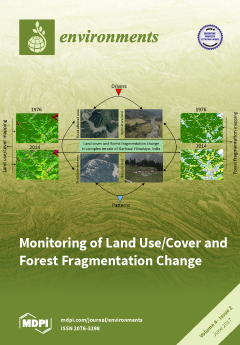Although the main purpose of the torrefaction of biomass is to produce high quality solid bio-fuel, the by-products, including liquid and gas products, are worth investigating to know their effects on the environment and the reusable possibility. Consequently, after torrefying waste bamboo chopsticks
[...] Read more.
Although the main purpose of the torrefaction of biomass is to produce high quality solid bio-fuel, the by-products, including liquid and gas products, are worth investigating to know their effects on the environment and the reusable possibility. Consequently, after torrefying waste bamboo chopsticks (WBCs) for producing solid bio-fuel, the liquid and gas products were examined in this study. The torrefaction target was set to produce torrefied waste bamboo chopsticks (WBC
T) retaining about 70 wt %. A proper torrefaction temperature (T
r) and torrefaction time (t
r) were found at 563 K and 40 min, respectively, for carrying out the torrefaction in a tubular furnace with carrier nitrogen. These conditions gave a solid yield (Y
S) of 69 wt % of WBC
T relative to the original WBC, and 31 wt % of by-products were produced. The liquid products were composed of water as high as 62 wt %, along with some organic acids. Some medicine components were also found in the liquid products, representing potential medicine applications. During torrefaction, CO, NO
x, SO
2, and CO
2 emissions were largely discharged from 10 to 20 min of torrefaction time. O
2, CO
2, and H
2O are the major compounds in the total gas products collected. Some combustible gases of C1 to C6 hydrocarbons were also produced. Moreover, the gas volume balances were computed and evaluated. The information obtained in this study is useful for the proper design, operation, pollution control, and utilization of the products.
Full article





